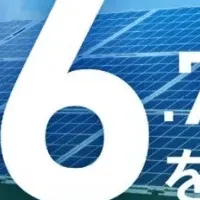
Huawei Digital Power Unveils Innovative Grid-Forming Solutions at Intersolar Europe 2025
Intersolar Europe 2025: A Platform for Innovation
The Intersolar Europe 2025 event held in Munich from May 7 to 9 serves as a significant platform for the renewable energy sector, where industry leaders showcase their latest innovations. Among the standout exhibitors is Huawei Digital Power, unveiling its advanced Smart PV+ESS (Smart Photovoltaics + Energy Storage Systems) designed to cater to various grid scenarios. The company’s cutting-edge grid-forming solutions promise to reshape the energy landscape and accelerate the development of high-quality renewable energy systems globally.
Understanding Grid-Forming Technology
The transition towards carbon neutrality and an energy revolution is a global necessity, demanding the construction of new energy frameworks to optimize renewable energy utilization. These modern power systems integrate energy flows with information flows, underpinned by the principle of "bits control watts." This fusion allows for flexible energy transmission, ensuring security, reliability, and stable grid formation — pivotal factors in the current energy equation.
Huawei’s Smart String Grid Forming ESS is at the forefront of this innovation, offering comprehensive grid-forming functionality across all scenarios. This system guarantees safety from the cell level to the grid, optimizing investments throughout the energy lifecycle while facilitating comprehensive digitalization. It ensures stable grid formation under all states of charge (SOC) and short circuit ratios (SCR), giving confidence that it is future-proof and adaptable to ongoing technological progression.
Power Generation and Distribution
On the energy generation front, Huawei's solutions are designed to be adaptable across diverse grids, providing stable energy transmission. The technology encompasses voltage, frequency, and power angle control features, equating its performance to that of synchronous condensers, and offers user-friendly maintenance alongside lower lifetime investment costs. In terms of transmission and distribution, the systems stabilize voltage and frequency while supporting black start functions to restore power in emergencies, mitigating impacts from power supply shortages at substations.
As the electricity market transitions from conventional energy sources towards ancillary service markets, including reactive power and inertia services, Huawei remains committed to evolving its Smart String Grid Forming ESS solutions to meet customer demands. The one-stop platform supports diverse business models, facilitating flexible adaptation as market needs change.
Energy Consumption Solutions
For end-users, this technology enables seamless grid connectivity and stable operation off-grid, engaging microgrid systems powered entirely by renewable resources. Hierarchical control mechanisms are essential in microgrid systems, allowing for an optimal balance between cost-effectiveness and stability. Huawei's microgrid control system is categorized into three levels: steady grid-forming control, coordinated control, and intelligent optimized transmission, providing robust technical support for low-emission energy transitions across various sectors, such as mining.
Designed for sustainable operations in commercial and industrial sectors, the Huawei Smart Hybrid Cooling ESS, with a capacity of 215 kWh, offers proactive safety measures, outstanding reliability, and cost efficiency. The dual-link safety architecture, termed "Cell-to-Consumption (C2C)," emphasizes electrical and thermal safety across the energy consumption process, backed by stringent certifications like UL 9540A and TÜV Rheinland's top safety rating.
Home Energy Management and Broader Impact
The innovative Home Energy Management Solution 6.0 promotes eco-friendly power generation and smart consumption in residential settings. Highlighting products like the LUNA ESS S1, which provides over 7 kWh for homes, this solution comes with industry-leading warranties, boasting over 40% more usable energy than the average market offering and customizable capacities up to 252 kWh. Its applications extend to smaller commercial and industrial establishments as well. Demonstrations at Huawei's residential booth underscored product reliability under extreme conditions, such as water submersion and high load resistance.
The quest for energy transformation transcends technological advancements; it reflects a collective global commitment to sustainability. Huawei Digital Power is committed to developing innovative solutions that integrate technologies across various domains (bits, watts, heat, and batteries). Collaboration with customers and global partners will expedite the establishment of novel energy systems powered by grid-forming methodologies tailored for all scenarios.
By championing these significant developments, Huawei Digital Power aspires to lead the charge towards a more sustainable and energy-efficient future, emphasizing the essential role of innovation and strategic partnerships in this transformative journey.
Topics Energy)










【About Using Articles】
You can freely use the title and article content by linking to the page where the article is posted.
※ Images cannot be used.
【About Links】
Links are free to use.